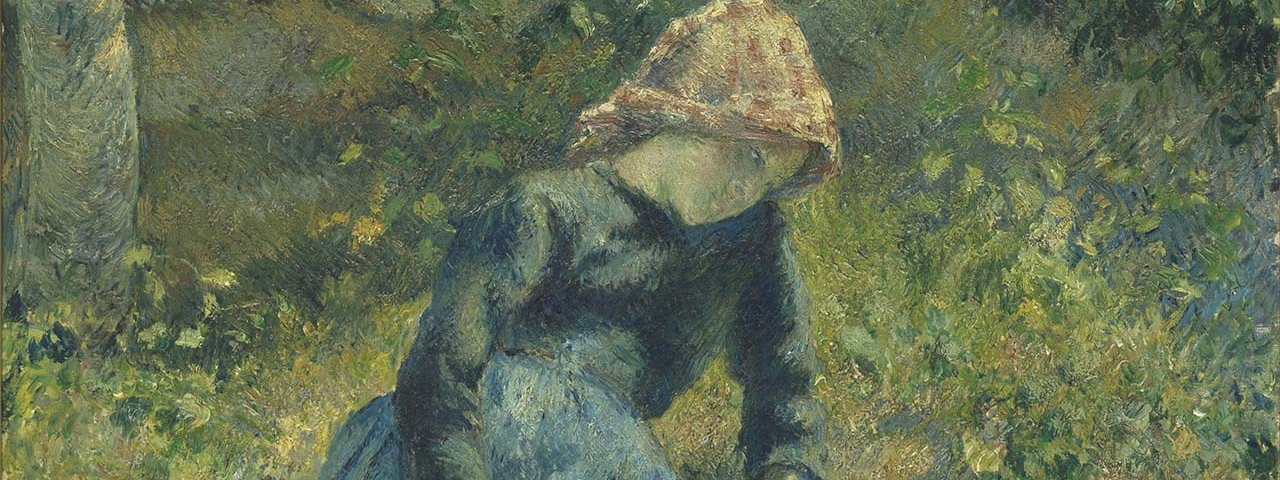From February 23 to July 2, 2017, The Marmottan Monet Museum will present the first monographic exhibition of Camille Pissarro organized in Paris in nearly 40 years. Meticulously selected, 60 of his most stunning masterpieces — eight of which will be shown in France for the first time — hail from the greatest museums of the world and the most prestigious private collections. This remarkable ensemble of works tracks the trajectory of Pissarro's life, from his youth in the Danish Antilles through his large series of urban tableaux featuring Paris, Rouen and Le Havre, all of which culminate to create a little-known portrait of the "first of the Impressionists."
At the start of the exhibition, a self-portrait of Camille Pissarro welcomes the visitor. Seven sections retrace his career and bring to light the originality of his oeuvre, demonstrating that, even as a young artist, Pissarro always distinguished himself from his contemporaries. His initiation into painting took place on an island, far from Paris and from the beaux-arts academies. Two Women Talking on the Seaside, 1856 (National Gallery of Art, Washington), loaned for the first time to France, stuns with its exoticism and illustrates that Pissarro's artistic beginnings had no parallel.
After moving to France in 1855, Pissarro quickly made the acquaintance of the future Impressionists. Like them, he was passionate about landscape and plein-air painting. He was, therefore, inspired by Jean-Baptiste Camille Corot and by Charles François Daubigny, as evinced by the canvas Banks of the Marne (Kelvingrove Art Gallery and Museum), which hails from Glasgow. Following his research to environments surrounding Paris, he painted The Road to Versailles, Louveciennes, snow, 1870 (Stiftung Sammlung E.G. Bührle, Zurich) and The Road to Versailles, Louveciennes, winter sun and snow (Museo Thyssen-Bornemisza, Madrid), which are shown here for the first time in France. Pissarro was thus considered by Emile Zola as "one of the three or four painters of this time."
The first to eliminate black and ochre pigments from his palette, Pissarro evolved to favor a lighter tone in his painting, typical of Impressionism. He would become one of the most engaged members of the group, and the only one to participate in all eight of their exhibitions. Numerous of his masterpieces, including Le Déversoir de Pontoise, 1872 (Cleveland Museum of Art, Cleveland) and Place du Vieux-Cimetière, Pontoise, 1872 (Carnegie Museum of Art, Pittsburgh) — which have not been shown in France for 35 years — demonstrate his artistic maturity and the triumph of Impressionism.
From 1883 onward, Pissarro explored the theme of the human figure and painted some of his most celebrated canvases, including La Bergère, also known as Jeune fille à la baguette or Paysanne assise, around 1881 (Musée d’Orsay, Paris), and Jeune Paysanne au chapeau de paille, 1881 (National Gallery of Art, Washington). In 1886, he evolved yet again. Pissarro turned away from Impressionism and embraced the explorations of Georges Seurat and the neo-Impressionists. This exhibition presents the most important masterpieces of this period, including La Cueillette des pommes, 1886 (Ohara Museum of Art, Kurashiki) and La maison de la sourde et le clocher d’Éragny, 1886 (Indianapolis Museum of Art, Indianapolis).
Finally, the two last sections of the show explore the large portraits and urban series to which the artist dedicated an important part of his late career. An extremely rare ensemble of views of Rouen, of Le Havre, of Dieppe and of Paris — four of which have not been seen in France for a century — invite us to discover an extremely little-known aspect of Pissarro's oeuvre.
Painter of landscapes and figures, of country and city, of earth and sea, "the first of the Impressionists" and a champion of pointillism, Camille Pissarro never ceased to reinvent himself. The exhibition at the Marmottan Monet museum brings to light the extraordinary diversity of his dignified and poetic oeuvre, one that attained dimensions both humanist and revolutionary.






















